AI Research
‘Communities’ of strange, extreme life seen for first time in deep ocean

Science correspondent, BBC News
Beds of clams, mats of bacteria that look like ice and fields of tube worms – these are just some examples of the strange, extreme life that an expedition to the deepest parts of the ocean has observed, filmed and photographed.
Diving in a human-occupied submersible to ocean trenches in the northwest Pacific Ocean, a Chinese-led research team captured pictures of life at depths of more than 9km (5.6miles).
The deepest marine life filmed before this expedition was at 8,336m – a snailfish that was filmed swimming in a deep ocean trench off the coast of Japan in 2023.
These new observations are published in the journal Nature.
 IDSSE/CAS
IDSSE/CAS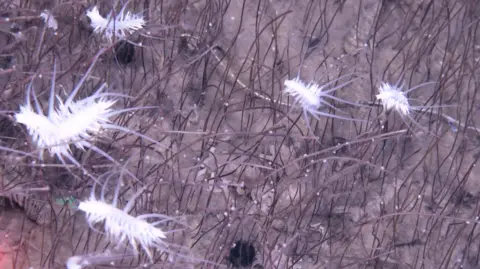 IDSSE/CAS
IDSSE/CASAlthough it was accepted among marine scientists that there would be life at these depths, scientists on this mission say the abundance of animals they saw from the windows of their submersible was “amazing”.
The scientific expedition covered more than 2,500km – exploring trenches at depths ranging from 5,800 to 9,533m.
Researchers travelled in a submersible vehicle called Fendouzhe, which can operate at depths of more than 10km for several hours at a time.
The team, led by researchers from the Chinese Academy of Sciences’ Institute of Deep Sea Science and Engineering, discovered what they describe as “thriving communities” of creatures.
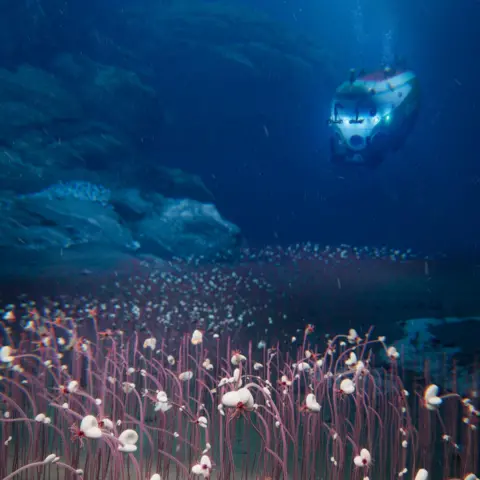 IDSSE/CAS
IDSSE/CAS“It’s exciting – especially for a deep sea scientist – to go to a place that human beings have not explored,” one of the lead researchers, Dr Xiaotong Peng, told BBC News. “It’s a great opportunity to discover new things. And what we saw was quite amazing.”
Scientists photographed and filmed what looked like fields of marine life – dominated by various different types of tube worm and mollusc. These animals live in the pitch dark and under vast pressure.
With no sunlight, life at these depths is fuelled by chemicals that seep out of the ocean floor. Hydrogen sulfide and methane seep out of faults – or cracks – in the Earth’s crust.
The scientists say they have recorded species never seen before. In future studies, they hope to work out how the bodies of these so called “chemosynthetic” or chemical-fuelled creatures convert these chemicals into energy.
“They must [also] have a trick to adapt to life in super high pressure,” added Dr Megran Du, also from China’s Institute of Deep Sea Science and Engineering. “That’s another question we need to answer.”
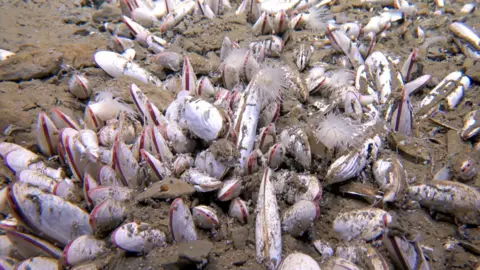 IDSSE/CAS
IDSSE/CASThe findings challenge “long-standing assumptions” about life’s potential at such extreme depths and pressures. They also suggest that these communities of animals, rather than extreme rarities, are actually widespread.
Prof Andrew Sweetman, a senior scientist from the Scottish Association for marine science told BBC News that the discovery showed that whole “ecosystems driven by methane may exist in the deepest parts of the ocean”.
And how did it feel, for a scientist, to descend to such extreme, pitch-black depths?
Dr Du told BBC News: “Some people might find it frightening, but I always encourage my students – look through the window at the bottom of the sea,” she said. “You will be inspired.”
AI Research
‘The New Age of Sexism’ explores how misogyny is replicated in AI and emerging tech
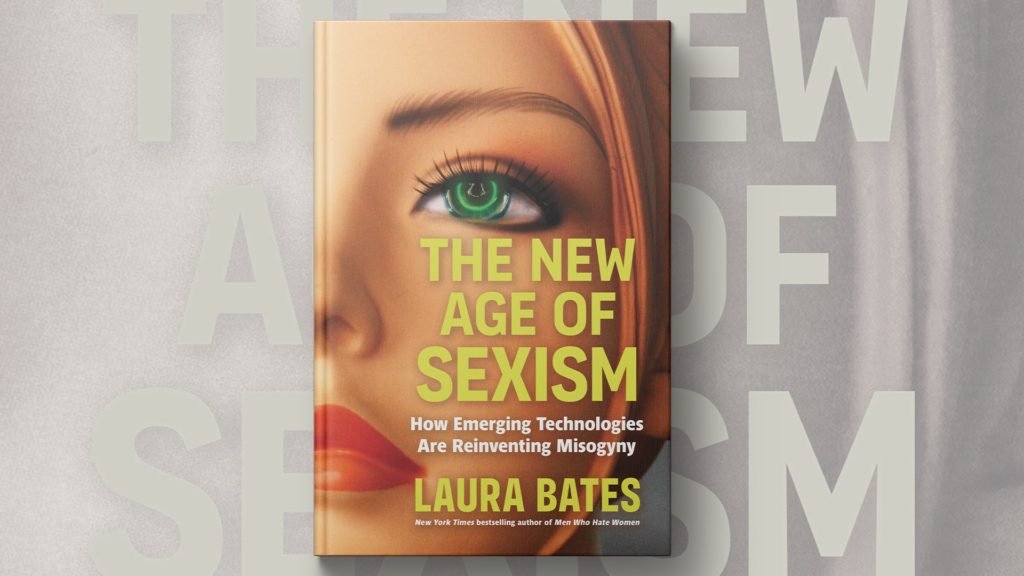
Artificial intelligence and emerging technologies are already reshaping the world around us. But how are age-old inequalities showing up in this new digital frontier? In “The New Age of Sexism,” author and feminist activist Laura Bates explores the biases now being replicated everywhere from ChatGPT to the Metaverse. Amna Nawaz sat down with Bates to discuss more.
AI Research
Creating the future with AI: Loyola University Chicago
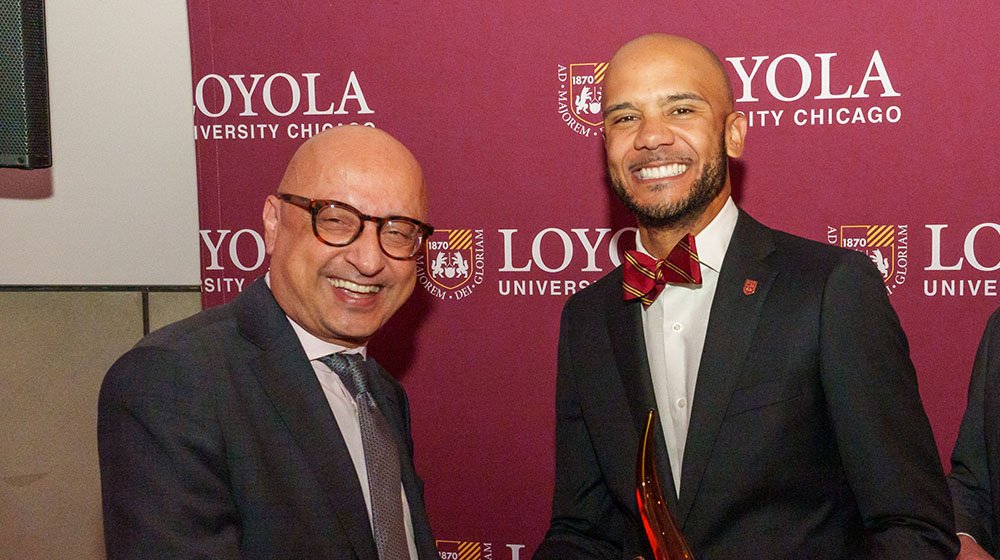
Wayne Kimball Jr. (right) and Dean Michael Behnam after Kimball received the 2024 Rambler on the Rise Award from Loyola’s Office of Alumni Relations.
When he was seven years old, Wayne Kimball Jr. sold watermelons on the side of the road in rural North Carolina. A few years later, he would build and fix computers in his neighborhood. With a can-do attitude and drive to find new solutions, he worked his way up from there to being a leader for tech giant Google, where he now serves as the Global Head of Growth Strategy & Market Acceleration for Google Cloud’s Business Intelligence portfolio.
Kimball’s journey has taken him around the globe, from North Carolina to Silicon Valley to the Midwest to his current home in Los Angeles. But regardless of where he has lived and worked, Kimball has remained committed to helping others, both as a Quinlan alumnus and as a community leader.
Exploring new horizons
Kimball had nearly a decade of experience in business operations, strategic investments, and management consulting before he returned to Google in 2020. There, he served as Principal for the Cloud M&A business, and subsequently as the Head of AI Strategy and Operations for Google Cloud.
“Working in corporate strategy roles at Google has a truly fulfilling opportunity because we are building for the future in spaces that don’t currently exist,” Kimball said. “I love the challenge of building the plane while flying it.”
Kimball led the integration of Mandiant, Google Cloud’s largest acquisition. In his current role, he is building global programs to accelerate business growth in alignment with the business intelligence product roadmap, delivering ‘artificial intelligence for business intelligence’ so that customers can talk to their data.
“How AI is applied varies depending on the use case and the industry,” Kimball said. “The application can be broad and scalable, yet very nuanced at the same time. AI in the medical field can be very different from AI in retail or logistics or higher education. There’s a lot of work being done to develop niche solutions for very specific use cases.”
Breaking down barriers
When he’s not seeking the next advancement in AI, Kimball works to elevate others. He says entrepreneurship is what helped him unlock the American dream and build wealth, but he learned early on that opportunity wasn’t always equitable.
“I found that despite the community’s need for entrepreneurship, entrepreneurs of color had disproportionally lower resources, particularly lacking access to networks and capital, which directly impacts opportunity for success and sustainability,” Kimball said.
Throughout his career, Kimball has volunteered and held leadership roles in organizations aimed at lifting and empowering communities that have been historically cut off from opportunity. Wayne has remained civically engaged by serving as the Western Regional Vice President of Alpha Phi Alpha Fraternity, Inc, the oldest intercollegiate historically African American fraternity founded at Cornell University in 1906, along with 100 Black Men of America.
Staying connected
Kimball has remained highly involved with the Quinlan community, with frequent in-person visits to Quinlan classrooms, virtual visits with MBA classes, hosting undergraduate students during the Quinlan Ramble, and meetings with other alumni. In Los Angeles, he is an active member of Loyola’s regional alumni community.
This commitment to Quinlan was recognized in 2024 when Kimball was awarded Loyola’s Rambler on the Rise award, which recognizes alumni who are servant leaders in their communities, exemplify excellence in their fields, and are engaged with Loyola after graduation. Returning to campus to accept the award brought back fond memories. That same year, he was elected to the Quinlan Dean’s Board of Advisors.
“It’s always special when you can go back to the place that contributed so much to the person and professional that you are,” Kimball said. “I was incredibly honored to be nominated, let alone receive the award.”
He credits Quinlan with helping to shape him into the transformational global leader he is today. “I’ve always been a firm believer that you should be proud of where you work, go to school, and your family, and I’m proud to be a Loyola alum and more directly a Quinlan alum,” said Kimball.
Learn more
AI Research
Sam’s Club Rolls Out AI for Managers

Sam’s Club is moving artificial intelligence out of the back office and onto the sales floor.
-

 Business2 weeks ago
Business2 weeks agoThe Guardian view on Trump and the Fed: independence is no substitute for accountability | Editorial
-
Tools & Platforms4 weeks ago
Building Trust in Military AI Starts with Opening the Black Box – War on the Rocks
-

 Ethics & Policy2 months ago
Ethics & Policy2 months agoSDAIA Supports Saudi Arabia’s Leadership in Shaping Global AI Ethics, Policy, and Research – وكالة الأنباء السعودية
-

 Events & Conferences4 months ago
Events & Conferences4 months agoJourney to 1000 models: Scaling Instagram’s recommendation system
-

 Jobs & Careers2 months ago
Jobs & Careers2 months agoMumbai-based Perplexity Alternative Has 60k+ Users Without Funding
-

 Education2 months ago
Education2 months agoVEX Robotics launches AI-powered classroom robotics system
-

 Podcasts & Talks2 months ago
Podcasts & Talks2 months agoHappy 4th of July! 🎆 Made with Veo 3 in Gemini
-

 Education2 months ago
Education2 months agoMacron says UK and France have duty to tackle illegal migration ‘with humanity, solidarity and firmness’ – UK politics live | Politics
-

 Funding & Business2 months ago
Funding & Business2 months agoKayak and Expedia race to build AI travel agents that turn social posts into itineraries
-

 Podcasts & Talks2 months ago
Podcasts & Talks2 months agoOpenAI 🤝 @teamganassi


